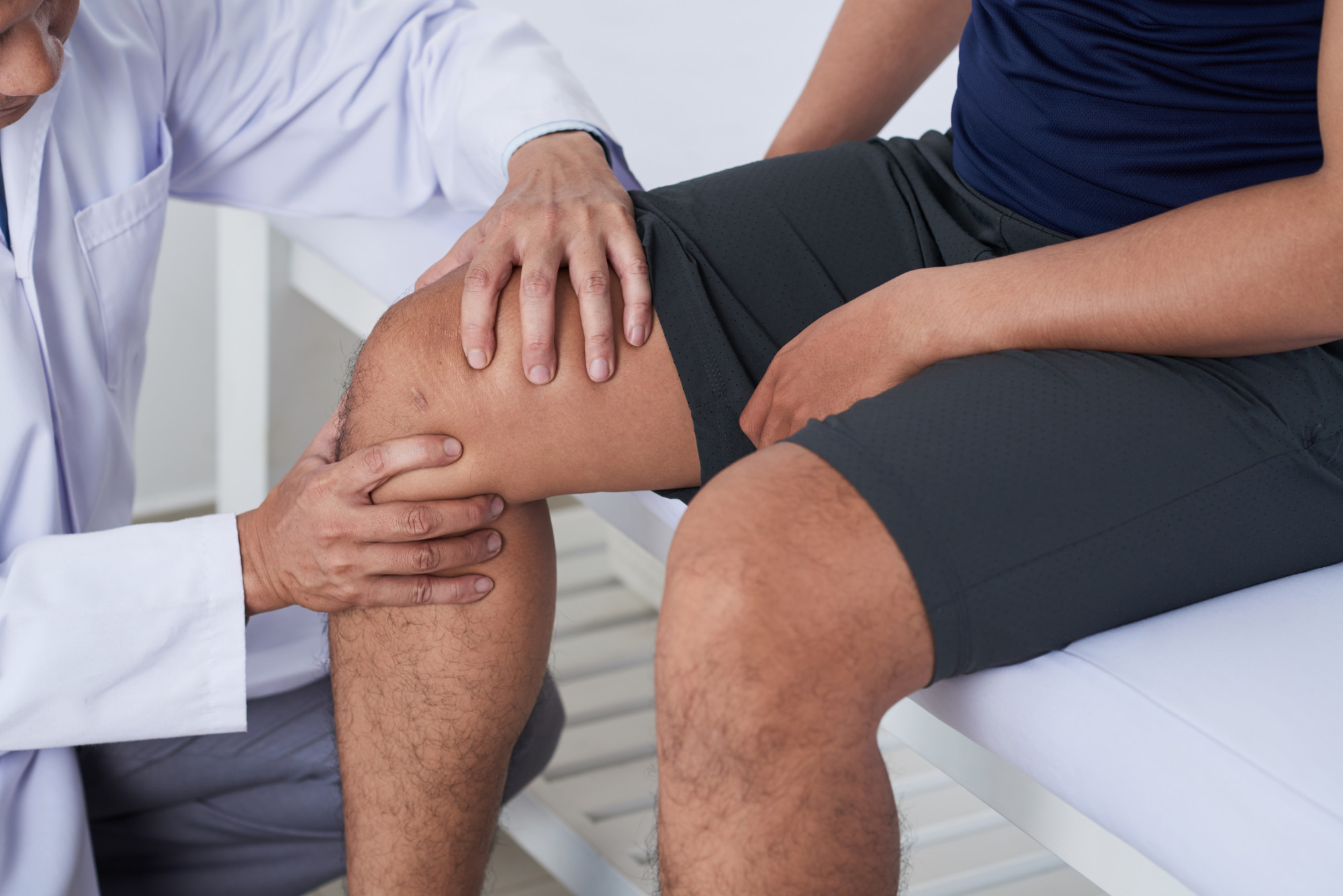
Did you know that babies are born without kneecaps? Their kneecaps are still soft cartilage and don’t turn into bone until a few years later.
Babies may not have to worry about their kneecaps, but it can be a familiar worry for adults. Knees are prone to injury, whether you’re playing an intense sport or only taking a walk in the park.
If you’re experiencing knee pain, you might be expecting the worst, but knee pain isn’t always a sign that something is seriously wrong.
For anyone wondering “why does my knee hurt?”, the guide below will give you more information on knee pain!
Why Does My Knee Hurt: The Causes
There are a variety of reasons why your knee hurts, but some are more common than others.
Dislocated Kneecap
The patella is the triangle-shaped bone that covers the knee. A dislocation occurs when the patella slides out of place. This usually happens as a result of trauma when the kneecap is put under stress. Playing intense sports is often the cause of knee dislocations.
Tendonitis
Tendonitis occurs when an injury occurs to the tendon connecting the kneecap to the shinbone. It causes inflammation, and it’s very common in athletes who are constantly jumping.
Fractures
If any of the bones around the knee get fractured, you’ll experience knee pain. These fractures are usually a result of trauma or a hard-hitting collision.
ACL Injury
The ACL is the anterior cruciate ligament. There are four of these ligaments, and they connect your shinbone to your thighbone, as well as providing rotational stability to the knee. An ACL injury occurs when one of these ligaments tears.
Your ACL is prone to tearing when you quickly pivot or move, so they’re common in people who play sports that require rapid changes in direction, such as basketball or soccer.
Bursitis
Bursae are fluid-filled sacs that surround your joints that cushion points between your bones. Bursitis can occur whenever the bursae become inflamed. Prepatellar bursitis refers to bursitis of the knee.
Knee Pain Symptoms
If your knee hurts, you’re probably experiencing some symptoms. Below are some of the most common symptoms that accompany knee pain.
- Stiffness and the inability to straighten the knee
- A constant dull ache
- Redness
- Popping or crunching noises during movement
- Swelling and inflammation
- Inability to move the knee at all
- Shooting pains while in use
- Difficulty walking or putting pressure on the knee
- Unusual appearance (most common with dislocation)
- Limping
Treating Pain at Home
You can treat some knee issues at home. Causes, such as bursitis, are not always chronic, and you can treat mild to moderate knee pain without consulting a doctor.
Ice and Hot Packs
Surround a ziplock bag of ice with a towel and apply it to your knee for 15 minutes. You can ice your knee once every hour for 3-4 hours to ease inflammation and knee pain.
Alternating between an ice pack and a heating pad will help reduce stiffness and joint pain.
Regulated Exercise
People who suffer from arthritis can experience more pain if they don’t move their muscles since the joints will continue to stiffen. For those experiencing arthritis of the knee, exercise can ease some of their pain.
Being overweight can also add pressure on knees, so exercising to lose weight to remove pressure from the knees is also an option.
Low-impact exercises, such as swimming, can be helpful for people who want to be mobile but avoid high-intensity exercises.
Choose Shoes Carefully
Flat shoes are the best option for anyone who struggles with knee pain. Adding cushioned insoles to your shoes can also help alleviate pressure off your knees.
Over the Counter Medication
If you know what caused your knee pain, and if the pain is only mild to moderate, you can often treat it yourself with over the counter pain medications. Medicines like Ibuprofen and Tylenol are good at reducing pain from inflammation.
Professional Treatment
If you’re still wondering why your knee hurts, it might be time to consult your doctor and seek treatment. While some doctors may recommend surgical treatments, other knee injuries may require less intensive treatments.
Physical Therapy
Physical therapy will help strengthen the muscles surrounding the knee and return mobility to it.
Many exercises work to strengthen the leg muscles, which can take the pressure off the knee itself. Some physical therapists may use electrical stimulation to further strengthen the leg muscles and reduce the stress put on the knee.
Braces
A common form of knee injury treatment is a knee brace. Braces are typically used to treat fractures or broken bones. Like casts, braces keep the knee in place while the bones heal.
Doctors will often provide crutches with a brace to remove pressure from the knee. Braces limit movement, so your doctor will likely recommend moving as little as possible to speed up the recovery process.
Surgery
Some knee injuries, especially ones that are the result of intense trauma or ACL tears, will require surgery. Following knee surgery, patients will likely have to use crutches or a wheelchair while the knee heals. You’ll need physical therapy following the procedure.
Be Smart
Take caution when exerting yourself. When you’re active, don’t abuse your body! Knee pain isn’t always due to chronic conditions, but it’s important to treat any injuries to avoid future complications.
If you can’t treat pain at home, or are still asking yourself “why does my knee hurt?”, it’s best to consult your general practitioner or a physical therapist.
Check out the rest of this blog for more articles on health and wellness!
Leave a Reply